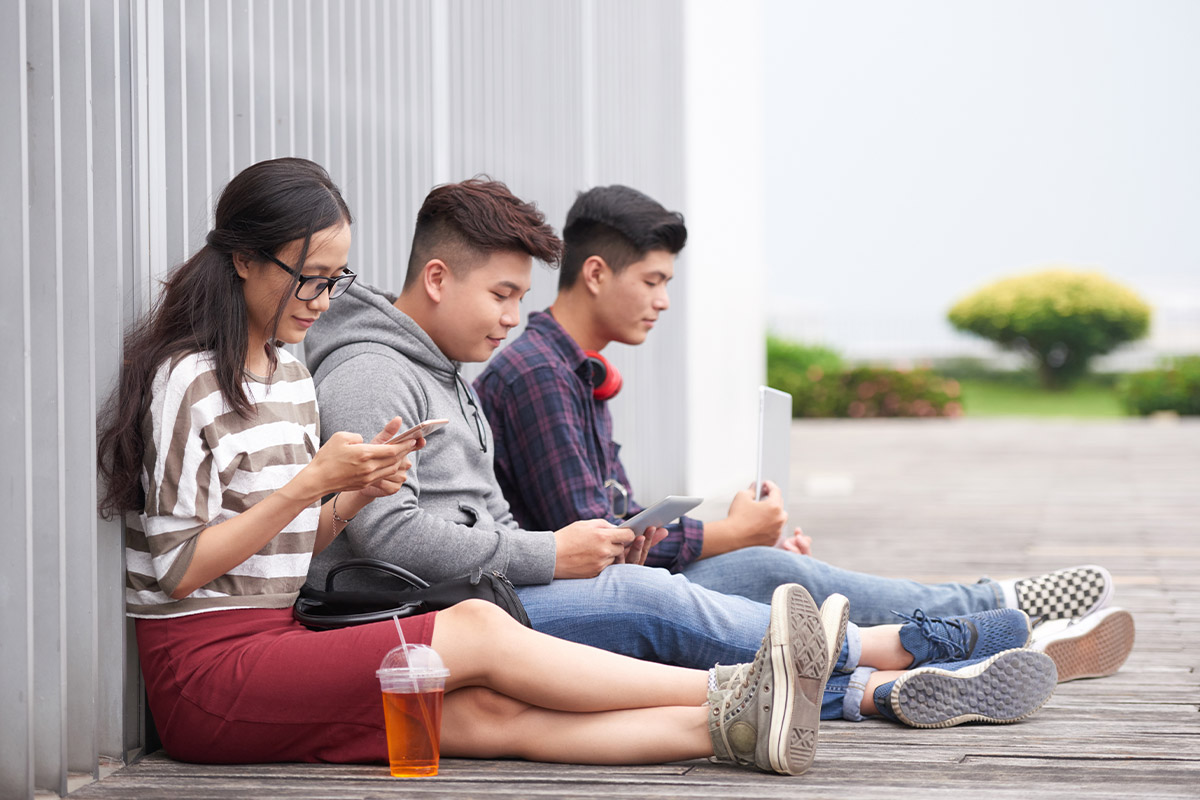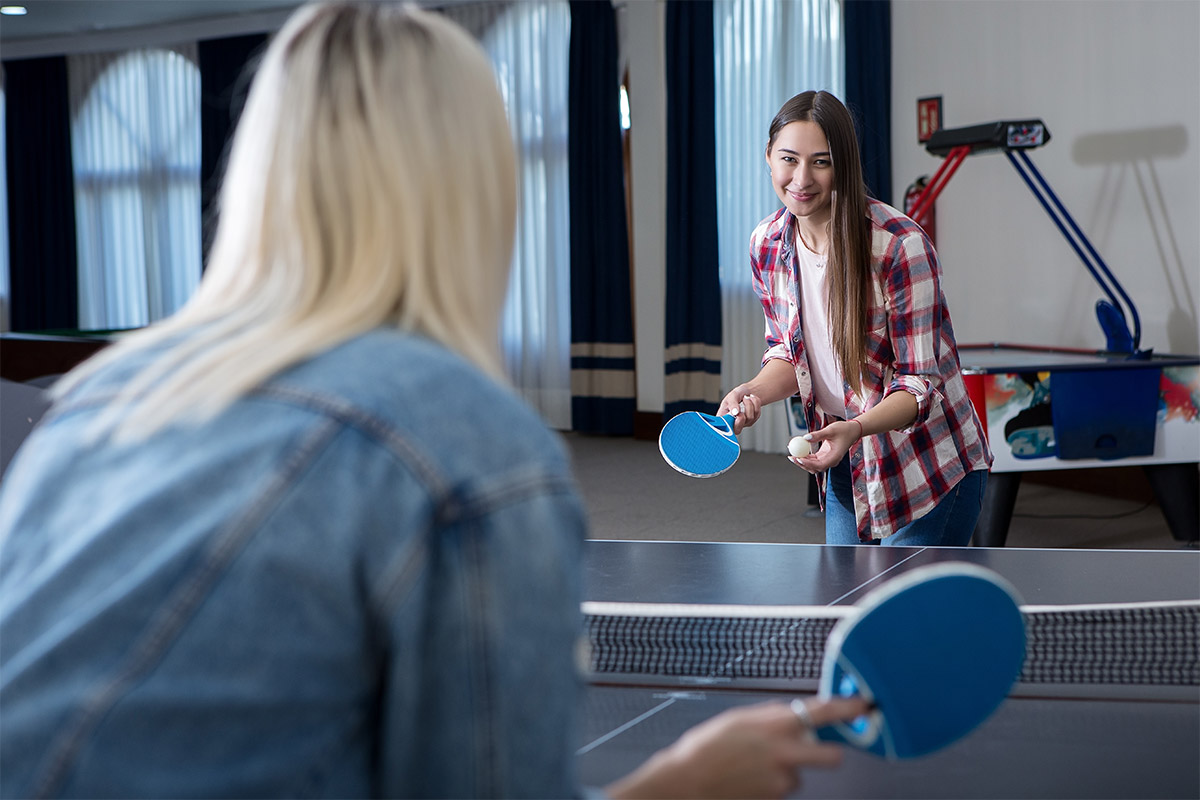Starved for genuine connection and burnt out from always being “on,” two-thirds of Americans across generations are yearning for simpler days when we weren’t plugged in 24/7. Roughly 40 percent of Americans wish they weren’t so reachable, a symptom of widespread digital dependency, made possible in large part by modern technology, apps, and platforms. We’re overwhelmed trying to keep up with new technology, and over half of us say tech oversaturates our lives and creates a barrier to authentic connection. Surprisingly, younger generations are more likely to believe that tech drives us apart.
Many Gen Zers believe the platforms that should be bringing us together are negatively impacting our self-image, creating insecurities, and highlighting differences while promoting a new downtime activity, “doom-scrolling.” Because of this, social media has come under great scrutiny, with 81 percent of Americans worrying about its effect on young peoples’ mental health.
The majority of people ages 18-54 said they would return to a time before the internet and smartphones. We’ve all seen the jokes Boomers post on Facebook of everyone in the waiting room being on their phones and not interacting. The sentiment that we spend too much time on our phones is shared among all generations.
So, what are we supposed to do about it?

Starting at the Root, Tech Giants
Whether to counteract the flood of smartphone notifications or just for nostalgia, consumers are investing in the “dumb phone” market, and Gen Z is a surprising and significant part of trend. Phones that filled pockets and purses pre iPhone, phones that flip, slide, and click, are reviving their near-extinct spot in the marketplace. Phones like The Light Phone offer a color-stripped, simplistic UI that provides you with the minimal operations of a phone—text, calls, music, notes, calendar, and maps—and nothing more. Other phones kept their analog buttons and mechanics like the Punkt Phone. They keep us in touch without the constant demand for our attention and investment that removes us from the present moment.
@tiktoktips Pause your scrolling. Time for a night time snack break!
♬ original sound - TikTok Tips
In an attempt to get in front of an exodus of people from their platforms, social media companies like Instagram and TikTok offer time-based constraints. Through the app or smartphone settings, you can limit your screen time across apps to reduce doom-scrolling through the night. TikTok even implements promoted videos to remind users to take breaks or go to bed.
Some organizations actively rallied for unplugging and organized National Unplugging Day to encourage people to take a break from the onslaught of digital media. According to the Unplug Collaborative, one-third of Americans say they are online almost constantly, and the Collaborative has set out to do something about it. Similar organizations are a bright light among bleak screens in the ongoing battle against digital burnout and disconnection from our friends and neighbors.

Idle Hands are Digital Playthings
Remote work, shrinking budgets, declining social connections, and mental burn out all have people spending more time at home. This newfound at-home time has people exploring more niche, special-interest hobbies. Hobbies and activities that get us unplugged, working with our hands, and creating help curb the impending dread that comes with being plugged in all the time.
DIY has been popular for decades now as a form of self-accomplishment and cost savings. Creating things by hand invokes a sense of nostalgia. DIY kits and experiences are becoming popular gift items—the gift of a shared activity, not just an item. Places like The Smithery in Columbus, Ohio offer hands-on experiences in jewelry making—a craft many have little experience with. People can tune into their interests while crafting something on their terms, either as a solo activity or with people they love—all while getting to step away from the digital distractions and concerns we constantly face.
Also in Columbus, Ohio, The Kee has a variety of game activities such as ping pong, cornhole, chess, sport-inspired games, a gallery space, and more. Curated activity spaces like these encourage us to get off our phones and interact with each other without being tempted to check our screens every 30 seconds. The Armory in St. Louis is like The Kee on steroids—it’s a six-acre adult playground with everything from bowling leagues to tennis tournaments to concerts and more. These types of bars answer the ask for interactive entertainment that goes beyond shopping or simply sitting around drinking. You can go out with a group of friends and play the night away together, feeling rested and fulfilled, rather than burnt out from not truly getting to unplug and enjoy your time together.
Getting outside, while common, is still the most prominent form of disconnection. Knowledge about gardening, foraging, and food prep/storage has never been more abundant—with 62% of Americans stating they want to grow their own food. With so much interest in gardening, why don’t more people get involved? Well, the answer lies in a few hurdles: time, space, and effort. With new brands emerging like VegoGarden, offering modular garden beds, or Gardyn, making hydroponic gardens, the healthy hobby is becoming more accessible. If you don’t have space outside, there are even countertop or indoor gardens like AeroGarden, which lets you grow herbs in your kitchen.
Like gardening, many of these activities have Americans wishing they had the time or resources. Brands and businesses can step in and provide starter kits, education, and easier bundling for consumers to dip their toes in and kick off their next unplugged passion. Investing in bringing your brands and products to life in a tangible way will bring people to invest in your brand when they see that you care about their passions and relationships.

Invest in One Another, Not Digital Vices
Brands that invest in fun, activity/community-centric spaces and pop-ups will see great returns—people crave genuine, entertaining experiences outside of corny text or email trying to get them to buy more.
As Americans become increasingly stressed and overwhelmed by our ever-increasingly connected and plugged-in lives, brands need to create holistic experiences that aren’t purely focused on the hustle of digital culture. As important as digital and mobile interaction is, dialing into fun, human-centered experiences and products will ensure longevity and a loyal following that won’t get burnt out due to a constant onslaught of consumption-focused digital communication.
Brands can serve as a jumping-off point, full of knowledge, tips, tricks, and products to help people unplug and unwind. If we treat our audiences as people, not just a conversion or engagement factor, they will want to invest in and support us back.
Learn more about brands dialing back into analog: Retailers Dial In On Analog – Chute Gerdeman


